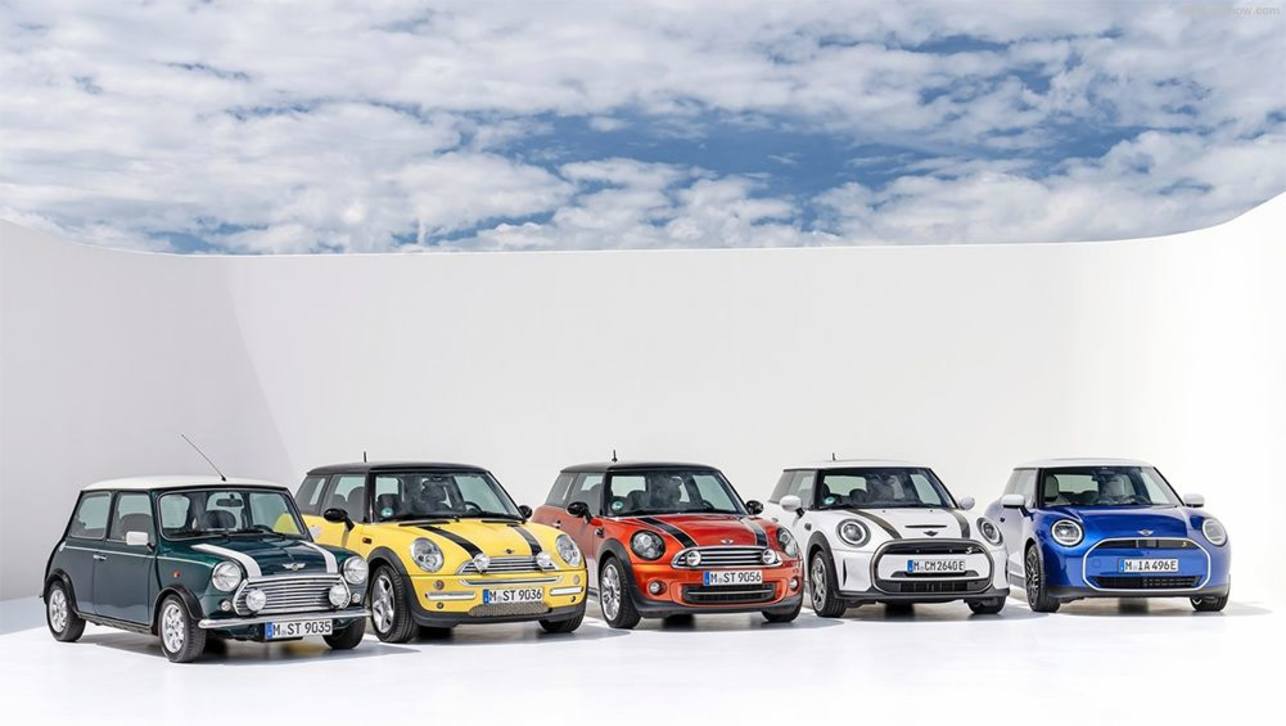It’s a case of in with the new and… in with the old as well. Starting next year, there will be two dramatically distinct Mini Coopers from BMW.
First up is the all-new, fourth-generation J01 Mini electric vehicle (EV), unveiled with great fanfare in Munich on September 1 as the Cooper E and SE, and co-developed with Great Wall Motors (GWM). It will be built in China on a bespoke EV-only platform to help keep costs down and efficiencies up.
Then there will be the redesigned ‘evolution’ of the third-gen, F55-based models, with internal combustion engine (ICE) drivetrains, which debuted in late 2013.
With the covers coming off sometime next month (October) ahead of a circa-mid 2024 release date in Australia, the ICE Mini will be available once again in three and five-door body styles, as well as a convertible, codenamed F65, F66 and F67 respectively. All will again be UK made, but there will be no more Clubman wagon, sadly.
Yet, despite all the fundamental differences, we understand that, visually at least, it will take a keen eye to tell J01 Electric and F65 ICE Mini hatches apart.

Like the nearly-identical headlight and tail-light treatments, their interiors will mimic the clean and simple yet very high-tech approach of the new Electric, though no parts are expected to be interchangeable between the two similar-looking Mini Coopers.

In fact, a quick glance at the third-generation, U25 Mini Countryman Electric that was also unveiled at the beginning of the month alongside the J01 Cooper Electric in Germany (where it will be built next year, instead of in the Netherlands like the outgoing F60 version) reveals the extent of visual change that the imminent ICE F65/6/7 Mini models will receive.

In the SUV’s case, fresh clothes cover an existing architecture – in this case, an enlarged version of the old UKL2 platform now known as FAAR.
It is essentially the same component set as found in the latest, U11 BMW X1, though the U25 Countryman does score the Mini Electric’s minimalised high-tech dash as well. Indeed, both the BMW and Mini SUVs are now virtually the same size and are even sourced from the same factory.

We don’t know whether there will be any meaningful dimensional changes with the F65/6 ICE hatch, unlike in the Electric hatch, which is smaller and narrower, as well as lighter than the outgoing F55 SE Electric equivalent.

Confused? You have every right to be.
But the strategy makes sense from a resource efficiency point of view, since rising EV sales and falling ICE sales could not justify an expensive all-new architecture for the 2024 Mini that would likely only run for six years before the brand’s entire line-up goes full battery electric in 2030.

So, to reiterate, the all-new J01 Mini Cooper Electric is new-from-the-ground-up and so completely different to the redesigned yet visually very similar F65/6 ICE hatches to be unveiled next month.

We’re told we will struggle to spot the differences between the two, even down to the same ‘fun-to-drive’ character and charm.
Watch this space.
Of course, this is not the first time that an ageing Mini has undergone a big facelift to stay current.

The 1959 British Motor Corporation Mini original underwent a ‘70s makeover, with a squared-off and longer nose treatment known as the Clubman in 1969 (1971 in Australia), that saw the local version out when manufacturing ceased in 1978.
Overseas Clubman versions lasted until 1980, when the original rounded-nose look – which had continued to be made throughout as an entry-level Mini – became the sole version and remained in production until 2000, in preparation for BMW’s Mini.

Since then, there have been three distinct core versions – the Rover-developed R50 released to frenzied acclaim in 2001, its F50 reskin from late 2006, and the outgoing F56 unveiled in 2013, that was twinned underneath with BMW’s first front-wheel-drive models starting with the 2 Series, second-gen X1 and third-gen 1 Series.


.jpg)



.jpg)


.jpg)



.jpg)


.jpg)
.jpg)




.jpg)

.jpg)
.jpg)
.jpg)




Comments